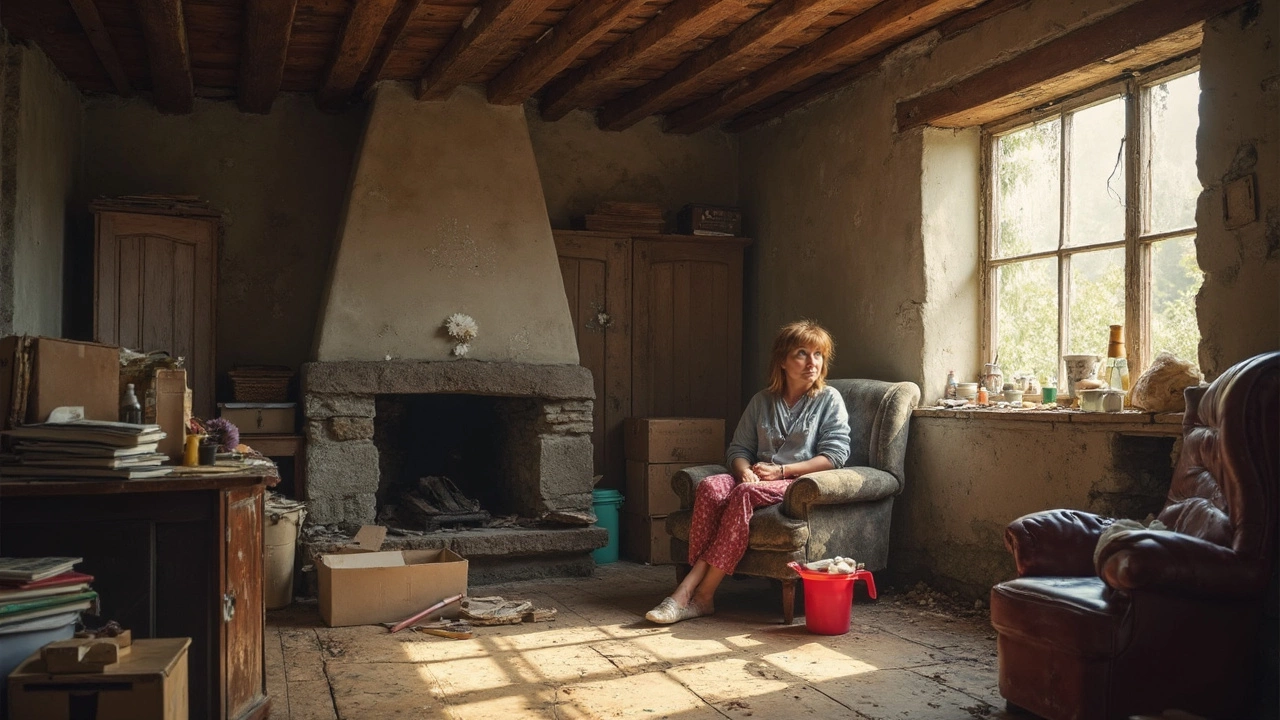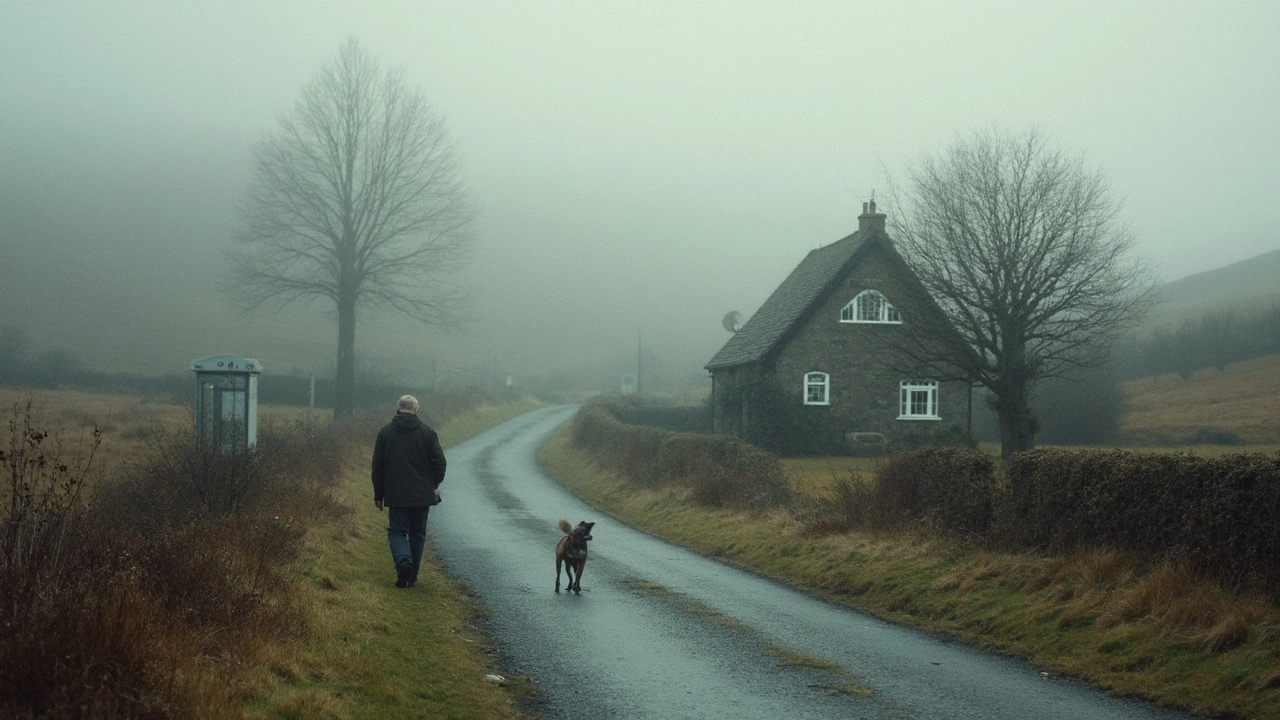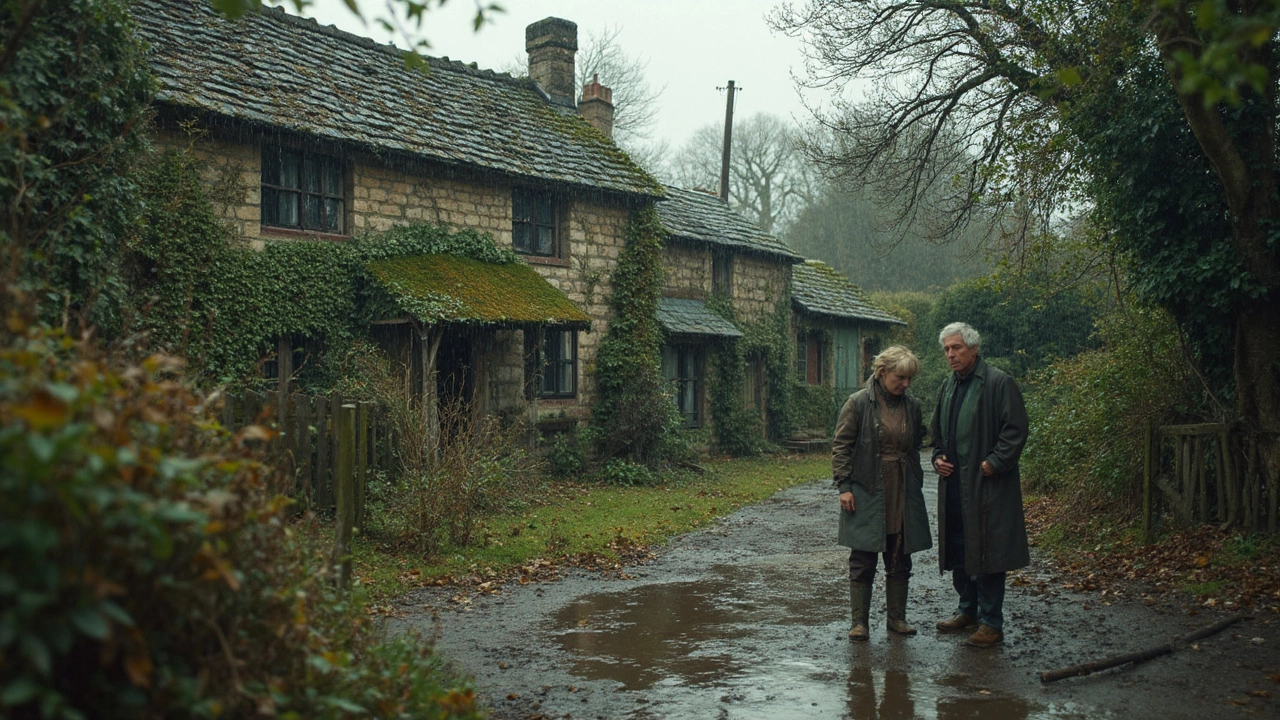People love country cottages for the charm and cozy vibes, but no one tells you about the headaches until you’ve signed the dotted line. If you’re picturing a quiet retreat surrounded by nature, it pays to step back and think about the flip side. Cottage homes have a way of springing extra bills, long to-do lists, and little annoyances that add up fast.
The thing most folks miss? Old cottages come with surprises. Roof repairs, ancient plumbing, and endless drafts aren’t just stories—they're weekly realities for a lot of cottage owners. And let’s not even start on what it costs to keep the place toasty in winter. So if you want the real scoop, keep reading—because pretty as they look, cottages aren’t always the dream people expect.
- Hidden Costs and Upkeep Surprises
- Winter Woes and Heating Headaches
- Distance from Everyday Essentials
- Internet, Tech, and Modern Comforts
- Wildlife, Pests, and Unexpected Guests
Hidden Costs and Upkeep Surprises
The biggest shock for new cottage owners? The number of things that need fixing, and how fast small problems turn into expensive ones. For starters, old homes are usually packed with quirks: patchy wiring, leaky roofs, and weird plumbing setups from decades ago. Cottages rarely match up to modern building standards, which means you’ll run into repairs most city dwellers never have to think about.
Let’s talk about the roof. Re-tiling an old cottage roof often costs double compared to a standard modern house, simply because the materials are harder to source and the structure may need extra work. If the windows are original—think warped, single-pane glass—heating bills will skyrocket, and you’ll still have chilly drafts in every room. Damp is a constant battle, especially in stone cottages with little insulation.
A lot of people don’t realize just how high the yearly cottage homes maintenance bill can get. Check out how costs compare for cottage upkeep vs. a typical urban home:
| Expense | Traditional Cottage | Modern Urban Home |
|---|---|---|
| Roof Repairs | $4,000-$10,000 | $2,000-$5,000 |
| Annual Heating | $2,200 | $1,400 |
| Plumbing Updates | $3,500 | $1,800 |
| Pest Control | $450 | $150 |
| Chimney Maintenance | $450 | $90 |
On top of that, most cottage homes are older than your grandparents’ furniture. You’ll run into “heritage” restrictions if you want to change anything, which can double renovation costs and make even simple fixes a paperwork headache. Many rural areas have building codes that limit how you can update or extend your home. Don’t forget the basics, either: gutter cleaning, chimney sweeping, and endless paint touch-ups. Everything’s a little harder (and a lot pricier) when the nearest hardware store is miles away.
One easy tip? Budget for at least 30% extra on top of any renovation quote, especially if you haven’t owned an old cottage before. Surprises pop up everywhere, and they almost always cost more than you think.
Winter Woes and Heating Headaches
So, you want to experience a classic cottage winter? Hope you like wearing three sweaters at once. Most cottage homes were built before anyone cared about insulation or double glazing. That means those thick stone walls you see in the photos? They’re cold as a fridge. Drafts sneak in around old windows and under doors, and suddenly that open fire doesn’t feel so romantic—just necessary.
Most cottages depend on old heating methods, like open fireplaces or wood-burning stoves. Central heating becomes a luxury, not a given. And if you do go modern, get ready for a rude awakening when you see the fuel bill. Heating oil prices, for example, shot up by over 40% in the last two years. Electricity isn’t much better, and rural supply can be unreliable—power cuts are not just a city myth.
| Heating Option | Common Problems | Estimated Cost (annually) |
|---|---|---|
| Wood Stove | Wood chopping, regular cleaning, uneven heat | $1,000 - $2,500 |
| Oil Central Heating | Expensive refills, maintenance, price spikes | $2,000 - $4,000 |
| Electric Heaters | High bills, slow heating, outages risk | $1,500 - $3,000 |
If your cottage is on old plumbing or has a tank-fed system, frozen pipes turn into a yearly panic. Nobody wants to discover a surprise ice-cold shower when it’s -10°C outside. To make it easier, here’s what longtime country dwellers swear by:
- Check insulation in the attic and around pipes before winter hits. Adding even basic draft blockers helps more than you’d think.
- Stock up on firewood or heating oil early, before demand sends prices up every autumn.
- Keep a backup heater or thick blankets for power cuts, which can last hours in remote spots.
- Ask locals about trusted plumbers and repair pros—they’re your lifeline for emergency fixes.
There’s a reason people joke about chilly toes in country cottages. Sure, winter has its charm, but the hassles can really add up if you’re not ready for them. Do your homework, plan ahead, and be honest about how much cold you’re willing to live with before taking the plunge.

Distance from Everyday Essentials
The thing with cottage homes? Living away from the hustle means basic stuff can turn into missions. Supply runs aren’t quick pop-ins like they are in the city. On average, folks in rural areas spend about 25-40 minutes driving just to reach a decent grocery store. That’s not counting when you forget something and have to go back.
It’s not just groceries either. Pharmacies, clinics, and hardware stores are often miles out, with limited hours. A 2023 UK rural access survey found that 37% of cottage owners see their nearest GP more than 10 miles away—and the same goes for hospitals and urgent care.
Here’s what usually happens:
- You stockpile food and supplies, and your pantry turns into a mini warehouse.
- Online shopping seems like a good fix, but some places don’t even get regular parcel deliveries or have reliable pickup points.
- You juggle errands to make every trip count, which takes planning or you waste time and gas.
| Essential | Rural (Miles) | Urban (Miles) |
|---|---|---|
| Grocery Store | 8.2 | 1.1 |
| Pharmacy | 7.5 | 1.0 |
| Hospital | 13.4 | 3.2 |
Weather can make things worse. Heavy rain or snow sometimes wipes out roads, so you might end up stuck or waiting out supply delays. If you have kids, school runs can take half your morning, and after-school activities add even more drive time. The simple stuff you take for granted in the city—like getting dinner, picking up medicine, or grabbing a strong Wi-Fi signal—becomes a game of patience and planning for cottage folks.
So, before you get swept away by the charm, think about how much time and effort goes into reaching daily needs. If you’re considering a move, try timing a couple of real trips before making a decision. It’s the day-to-day reality that decides if the cottage homes lifestyle fits you, more than anything else.
Internet, Tech, and Modern Comforts
If you’re dreaming about cottage homes as your ticket to peace and quiet, it’s easy to forget about modern must-haves like fast Wi-Fi or reliable cell service. Here’s where reality steps in: rural areas often lag way behind cities for internet speeds and digital access. According to data from the FCC as of 2024, about one in four rural homes can’t get internet speeds above 25 Mbps, which is barely enough for a decent Netflix night, let alone remote work or online classes.
And if you thought your smart thermostat or home security camera would work smoothly, think again. Outdated wiring and thick stone walls are common in cottages, which makes installing and keeping tech gadgets running a real challenge. Reliable phone service can also be spotty, since rural mobile towers are spread out and lots of cottages sit in valleys or wooded areas that block signals. If you need to be "on call" for work or emergencies, that’s something you just can’t ignore.
Don’t forget heating and cooling. Many older cottages still depend on wood stoves or old furnaces, which means no handy app to adjust your temperature from bed. Installing new heating or AC usually costs more in cottages because of access and the need for rewiring or extra ductwork. Little extras like dishwashers or modern kitchen setups can also be tricky, since wiring and plumbing are rarely up to modern standards.
If you’re seriously considering life in a country cottage and tech is a must, here are some tips:
- Check broadband coverage before you buy. Ask neighbors about their real speeds, not just what service providers promise.
- Invest in signal boosters or mesh Wi-Fi systems if you’re stuck with thick walls and dead zones.
- Consider satellite internet, but be aware it can be expensive and weather-sensitive.
- Factor in the cost and hassle of upgrading wiring or plumbing before making any upgrades to smart home tech.
Bottom line: cottage homes often force you to rethink your expectations of modern comfort. Fast, reliable tech isn’t impossible, but it often takes extra effort—and extra cash—to bring your cozy escape in line with city comforts.

Wildlife, Pests, and Unexpected Guests
Living in a cottage home doesn’t just mean birdsong and the occasional bunny. Once you’re out in the country, wildlife and pests often see your place as their home, too. Cottages, especially older ones, have more holes, nooks, and crannies than you can count—making them perfect hideouts for critters.
Let’s break down the usual suspects. Mice and squirrels love attics and crawl spaces, especially when temperatures drop. Wasps, hornets, and ants can sneak inside through cracks the size of your pinky. In wooded areas, foxes and raccoons can dig through bins or make a mess of your garden. Some folks even find bats or snakes making surprise appearances, especially in outbuildings or cellars.
The British Pest Control Association reported that rural homes are three times more likely to face rodent infestations compared to urban dwellings. And if you thought classic fly screens or a cat was all you needed, think again. Larger animals get curious—and persistent—if they notice even a hint of food or shelter.
“People moving to the countryside often underestimate the tenacity of local wildlife. Prevention is key—once pests move in, removal costs and repairs can really pile up,” says Sophie Thorpe, environmental pest expert at BPCA.
Here’s a quick look at how common cottage invaders stack up, according to real-life reports from rural homeowners:
| Pest/Wildlife | Most Active Time | Damage/Issues |
|---|---|---|
| Mice/Rats | Autumn/Winter | Chewed wires, ruined insulation, health risks |
| Squirrels | Year-round | Noisy attics, damaged woodwork |
| Wasps/Hornets | Summer | Nests in walls/roof, painful stings |
| Bats | Spring/Summer | Noisy, messy droppings |
| Raccoons/Foxes | Night all year | Scattered trash, dug-up lawns |
So, what can you do besides hope for the best? Focus on prevention first:
- Seal any gaps or cracks around doors, windows, and vents. Expanding foam and wire mesh are your friends.
- Don’t leave pet food or compost out overnight; these are serious animal magnets.
- Check attics and sheds every few months—watch for droppings, nests, or strange smells.
- Store trash in sealed bins and, if you have chickens or a compost heap, add extra fencing.
- If you’re dealing with bats or protected species, check the local laws before trying removal—sometimes you’ll need help from wildlife services.
Staying one step ahead of wildlife and pests isn’t glamorous, but it’s a big part of country cottage life. If you’re ready for the challenge, rural living can still be rewarding, just don’t expect to have the place to yourself!
